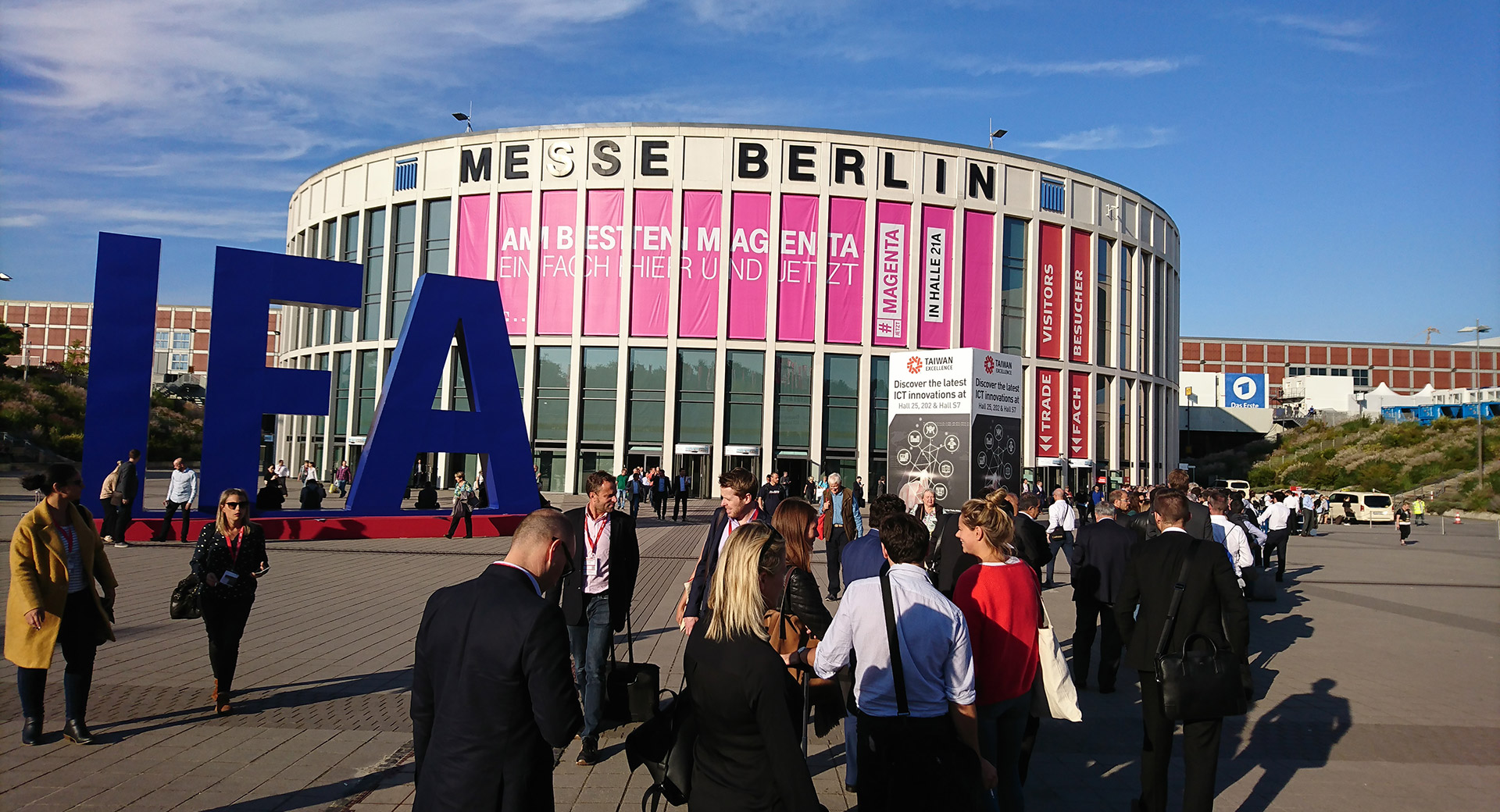
IFA (pronounced “eefa”), is Europe’s largest consumer electronics exhibition. It is the annual event for companies involved in the design, production and sale of everything from VR headsets to kitchen extractor fans.
With only a day to see the products in all 26 halls, sore feet were the least of my problems, there was literally too much to see and experience in a day. The show itself runs from the 1st to the 6th of September. After visiting the show for the first time this year, I now fully appreciate how the organisers can run it over such a long period. Even on the 5th day of the exhibition, the halls and corridors were at full capacity almost to the very end of the day.
All the big manufacturers were represented in grand style with some like Siemens taking over at least half of an entire exhibition hall. Their aim, and understandably so, was to demonstrate their brand’s ability to completely cover all their customer’s needs, from communication to interactive kitchen cook tops, to (and I’m not 100% sold on this one) cleaning robots.
The established brands were also balanced by a wide array of smaller companies and lesser known brands. Some with only a single product on the market. This year’s exhibition also dedicated an entire hall to start-up companies called “IFA Next”. Many of the product ideas here were quite brilliant but I’ll touch on that later.
As per the name, the start-up hall was full of the industry’s latest product releases, and gave a real sense of what the next wave will bring. As I was attending on behalf of i4, my aim was to experience, absorb, and report back to the wider design team. Being here also allowed me to observe on behalf of our clients who weren’t able to attend themselves. Giving i4 the opportunity to pass on insights on the latest developments from some of their competition.
As i4 work across all categories of consumer goods (such as white goods, small appliances, communication and AV) I had a lot of ground to cover during the opening hours of 10am-6pm. Unfortunately this didn’t leave me any time to enjoy the “Sommergarten” Octoberfest held in the centre of the exhibition.
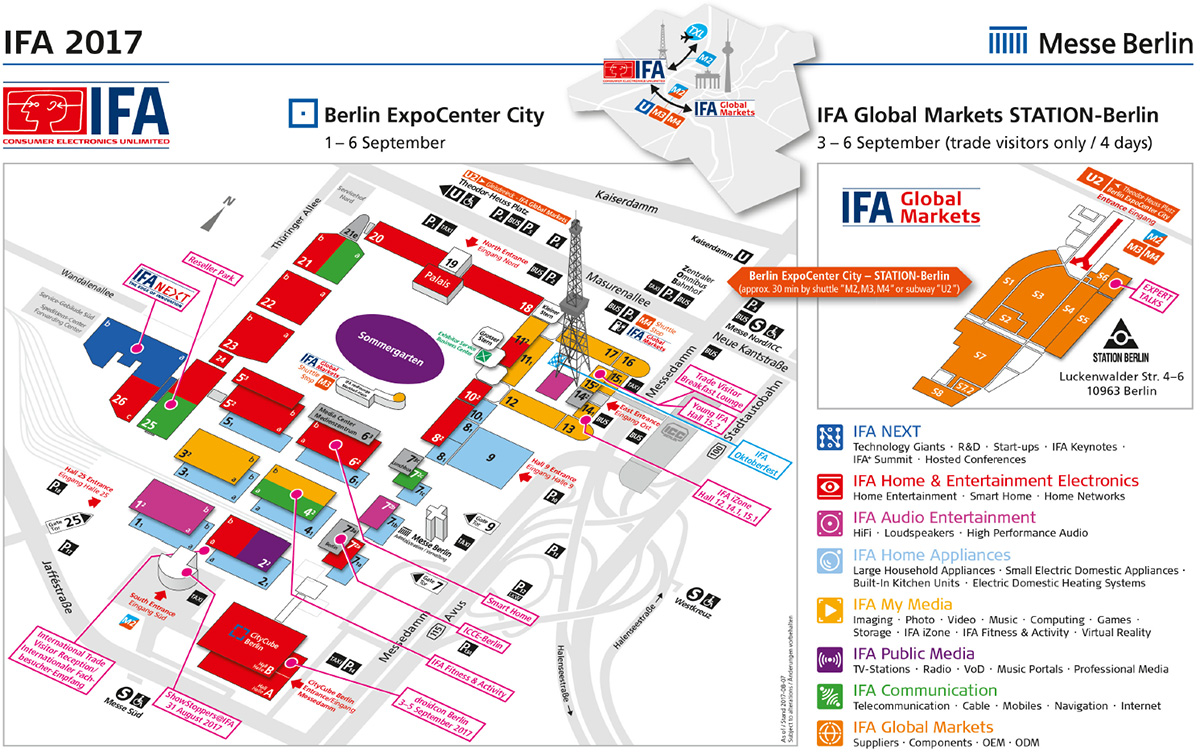
I’ll start in the kitchen, which is an area where innovation is being championed and the competition is fierce.
Slovenian based Gorenje had a vast range of cooking and refrigeration appliances on display. I was drawn to the high value the company placed on the aesthetics of their products. A particular eye-catching design was their extraction hood pictured below. Whilst this extractor does not have an A level energy efficiency rating it boasts an innovative perimetric aspiration system (P.A.S.) that directs its extraction power to the edges. This approach claims to reduce energy consumption and noise at the same time.

Another mould breaking design for cooktop ventilation (this time actually with an A rating) was on the Siemens stand with an extractor that could be placed alongside the cooktop itself..
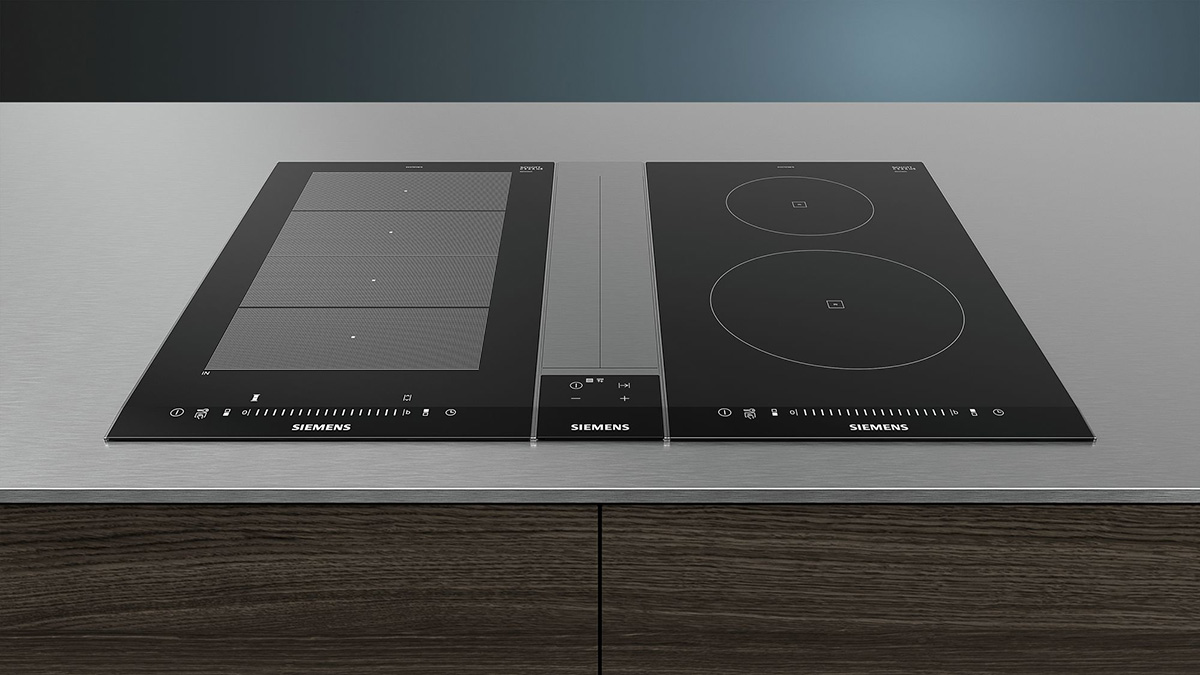
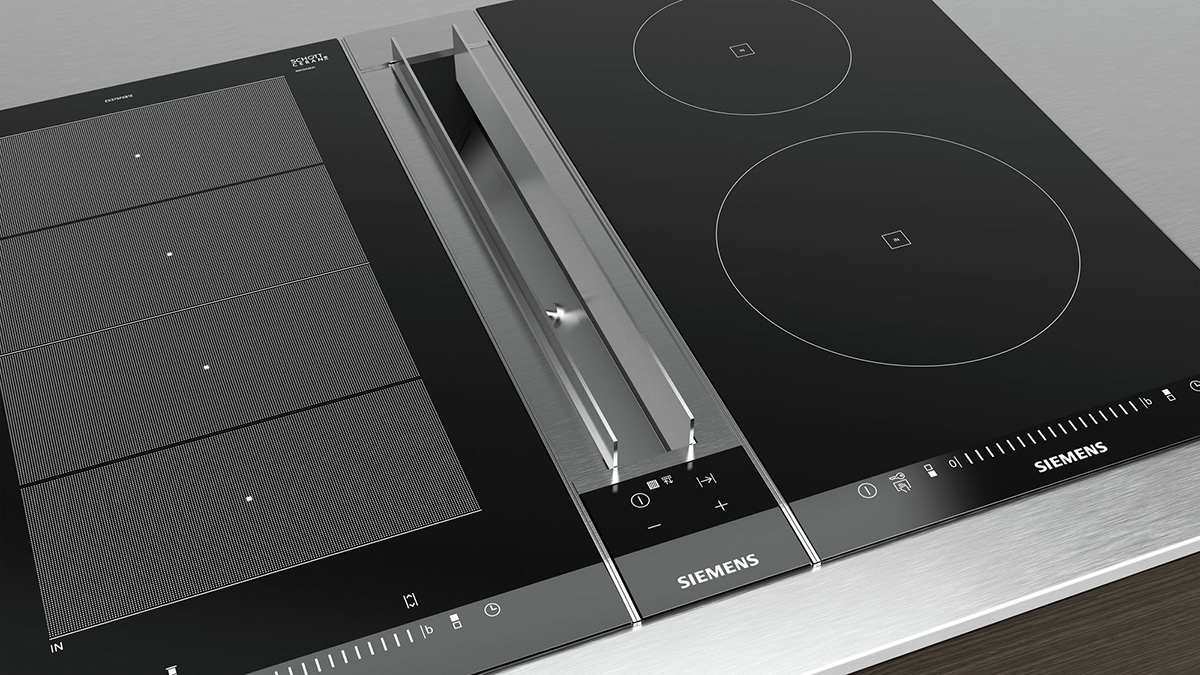
A more futuristic scene was set by Grundig’s VUX (Virtual User Experience) where their extractor projects a control interface onto an ordinary worktop, sensors within the extractor allow you to interact with the system and control appliances within the kitchen, access recipes and even watch a baby cam.
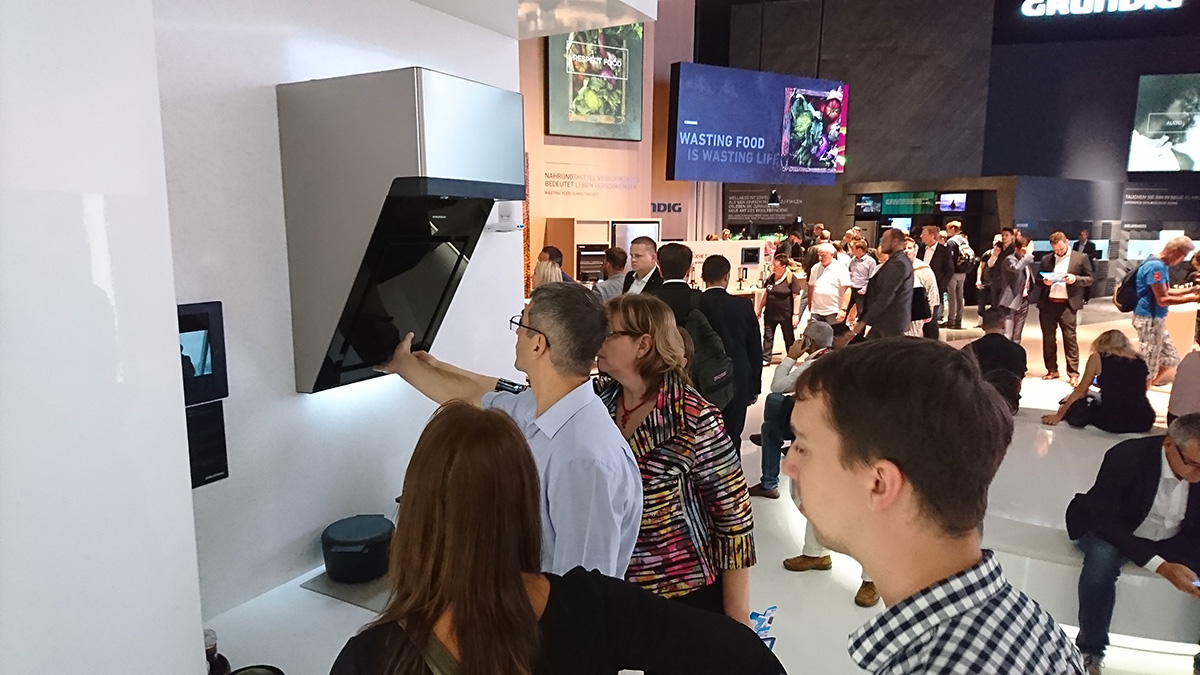
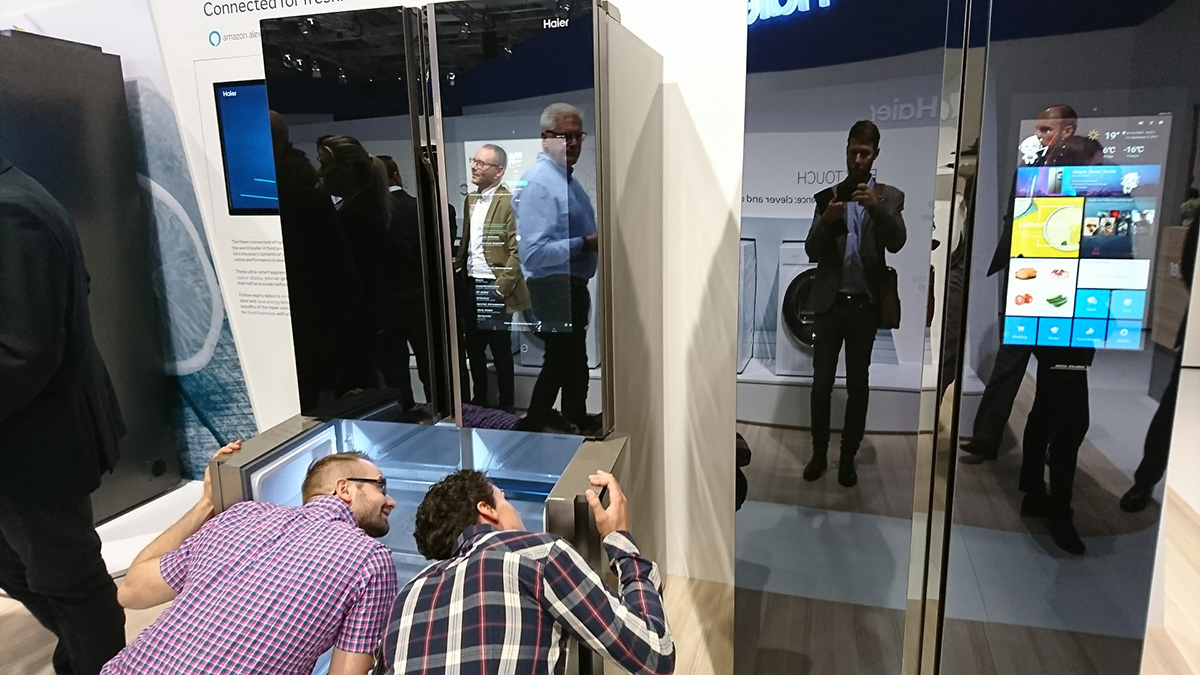
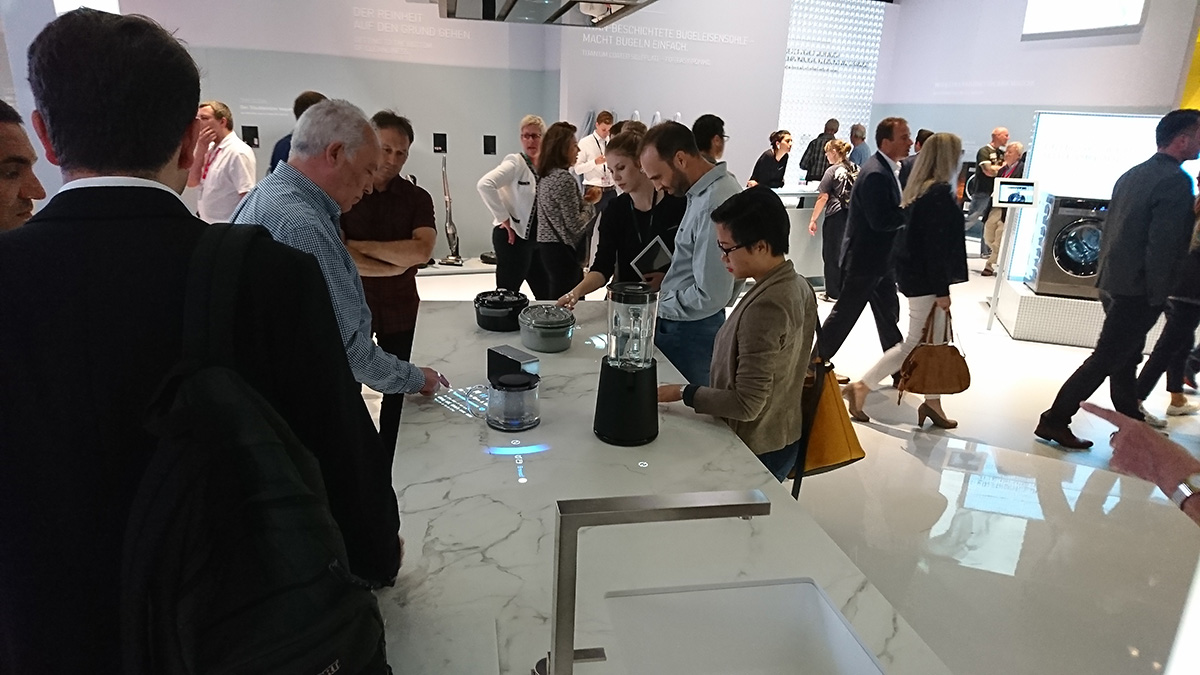
All of the high-end model releases from the major brands were sporting sizable touch screen displays on ovens, washing machines and fridges. On face value this feature is understandable on microwave ovens that uses sensors to detect what you are cooking and its weight, leaving the user to simply confirm the suggested settings. I was left a little skeptical on the requirement for touch screen washing machines and fridges. Particularly as these devices now able to be connected to your phone/tablet and any message they want to send, such as those Siemen’s HomeConnect app regarding the most cost efficient time to run your dryer, don’t require a screen on the actual device. What did appear to be an innovation that would have a positive impact on the environment was an innovation by Siemens where they introduced the "SensoFresh" feature, which extricates odours from non-washable clothing items without washing them.
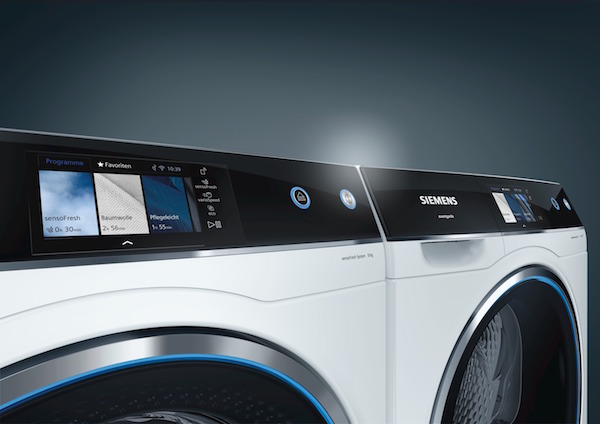
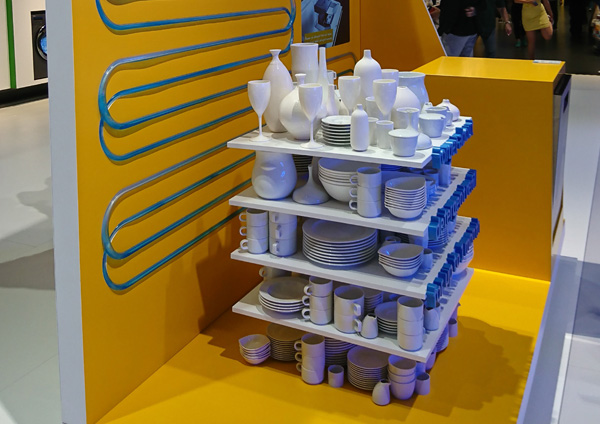
Beko announced that they would be the first company in Europe to launch an AutoDosing range of washing machines and dishwashers for those of you who continually forget to put the liquid/tablets in before hitting start!
In the case of fridges, some companies seemed to be pushing energy efficiency in the wrong direction with large format screens on some requiring venting within the fridge doors due to the heat they generated. Glass like reflective surfaces were quite popular for fridges and microwaves but it was clear from all the handling from nosey potential buyers that this was a high maintenance finish as finger-marks showed easily. On the flip side, Haier were sporting an extremely large range of fridges with some exciting textures on their smartly designed doors with internal compartments that can be independently temperature controlled.
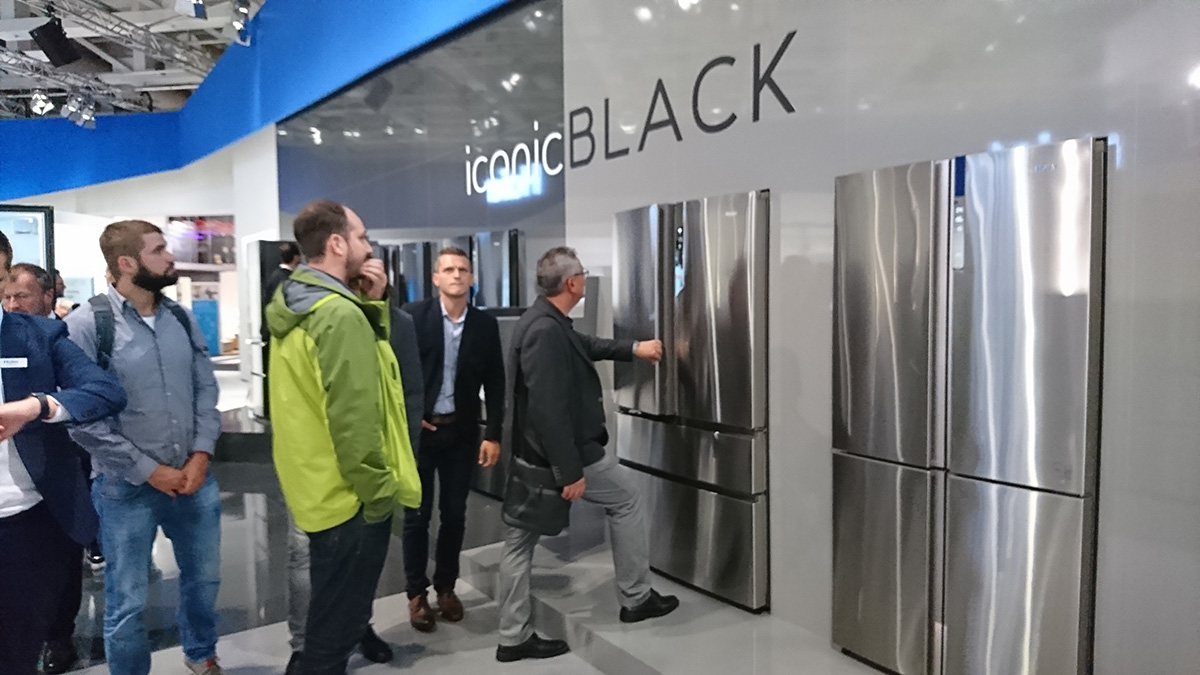
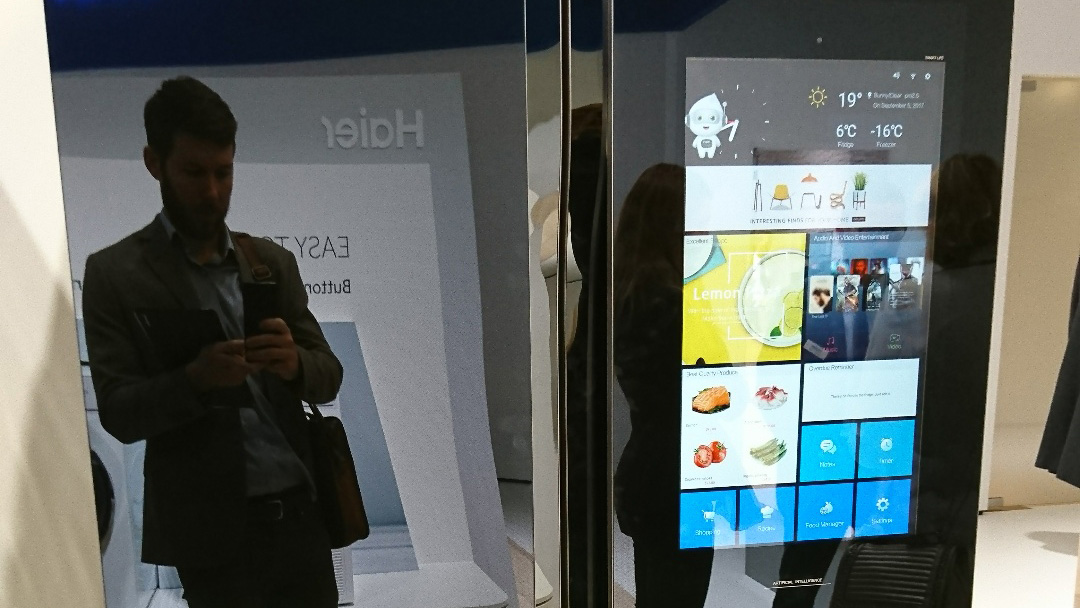
A product that many in the i4 office would benefit from is the very portable/battery powered Kärcher pressure washer for cleaning cars and mucky mountain bikes. As a car owner who lives in an apartment with no access to a hose, this type of product ticks a lot of boxes. To be manageable as a truly portable sprayer they had a challenge keeping the weight down to a manageable level. Therefore they had to compromise on water capacity which seemed a bit limited and the pressure could be improved but they had to start somewhere. Interestingly, the body of the product and the sprayer looked remarkably similar to a concept design one of designers had conceived of the previous year.
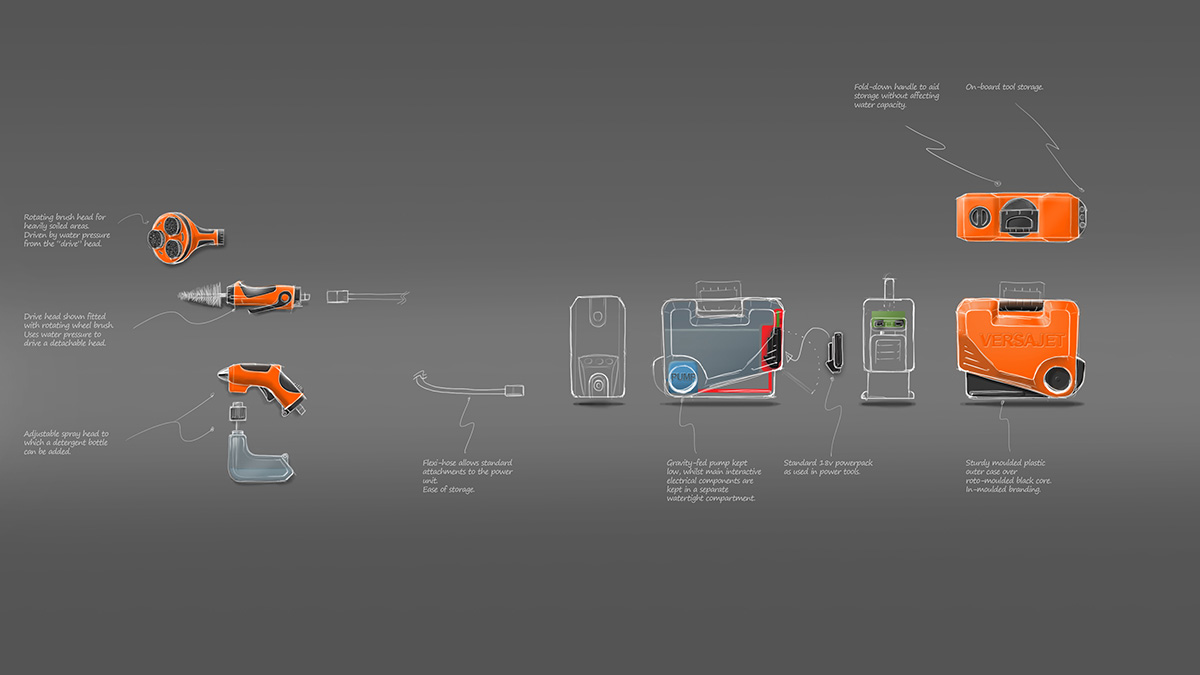
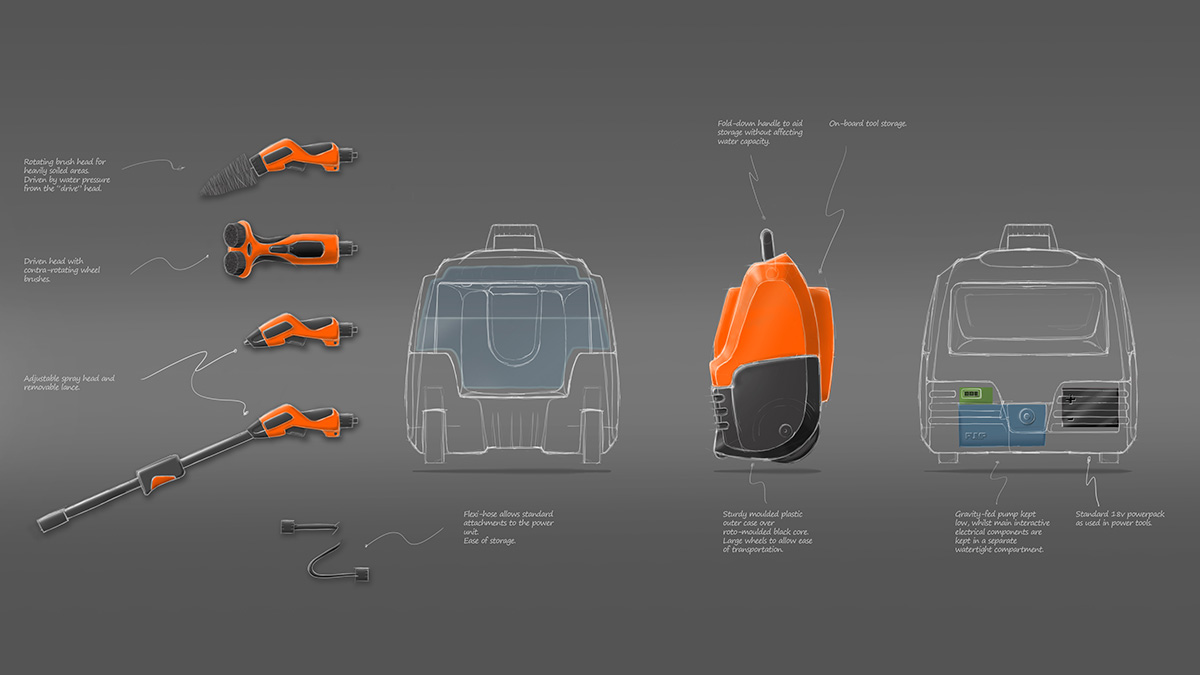
Kärcher also released a new class of floor cleaner called the FC5 this year. As shown in it differs from traditional vacuums as it features rotating rollers which vacuums up dust but also cleans the floor with water and detergent.
I spotted a very practical product on the Busch-Jaeger stand. As Germany’s major household switch and socket manufacturer it was only fitting for them to have taken sockets for charging phone/tablet charging to the next obvious level. That is to incorporate the male charger part into a ledge that extends from a wall mounted socket. The sensibly named Power Dock is space saving at its simplest. A challenge with the current design is that it permanently protrudes from the wall and therefore prone to snagging/breaking, and would require a whole new faceplate if you change allegiances from apple to android (or vice versa).
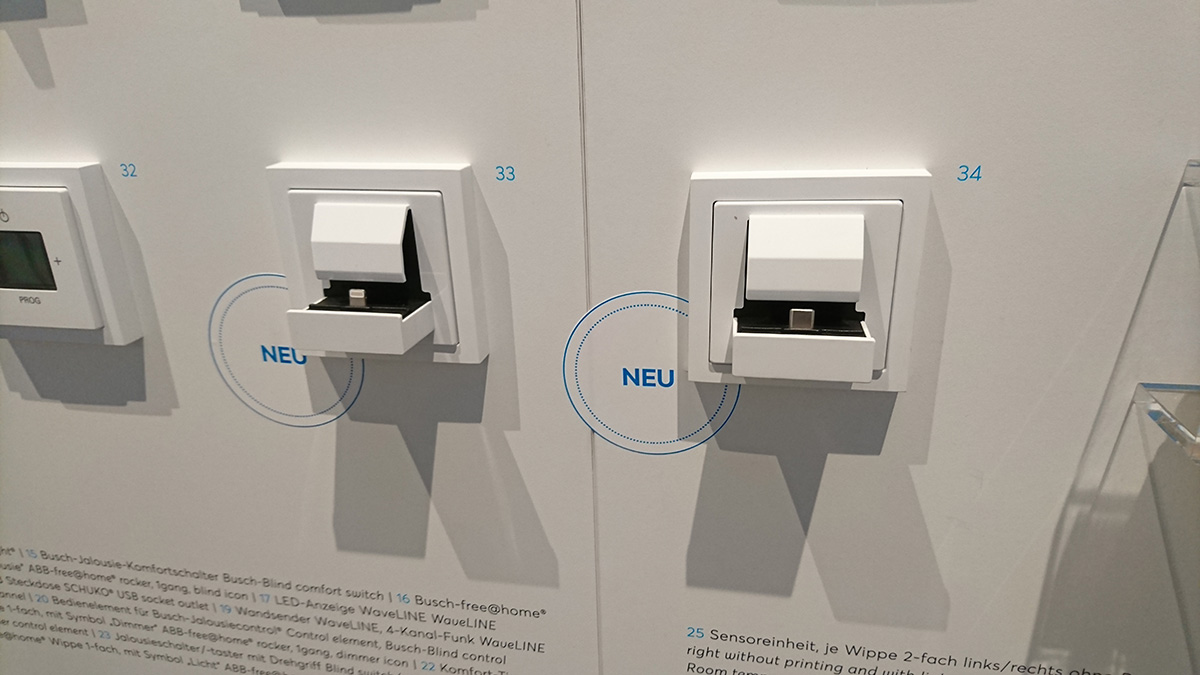
I’ve been asked a few times what the oddest product was at the show and my vote goes to Panasonic’s oddly named “Sustainable Maintainer”. A concept design of a product the size of a wardrobe responsible for washing clothes (individually) by identifying the fabric requirements, degree of soiling and then sprays with the calculated amount/concentration of detergent, sucks the moisture from the garment, folds and places this garment onto a pile of clothes. Whilst an interesting concept and one that demonstrates multiple advances in robotics and sensing technology, the laborious process undertaken on a garment by garment basis would need to be sped up enormously to handle more than one person’s laundry in a day.
From a personal perspective, the most useful product that I wish I could have bought on the spot was in the IFA Next hall from the French start-up company Velco. The company have appeared to integrate two of the biggest grievances any cyclist has encountered. Theft and not knowing when to turn off a street/path. The cutely named Wink handle bars feature blinking lights (left and right) that let you know when a turn is coming. The bar syncs with your phone and the navigation (i.e. blinking left or right) is controlled through an open source map that specifically incorporates bike paths. The bars have in-built GPS, GSM and battery so when the bike is stolen (shaken in the process) by a potential thief, a regular notification with the location of the bike is sent to your phone. For the theft protection services there is a 2 euro per month subscription. The product is set to hit the market after in January. So unfortunately they weren’t on sale at the exhibition. A late Christmas present perhaps?
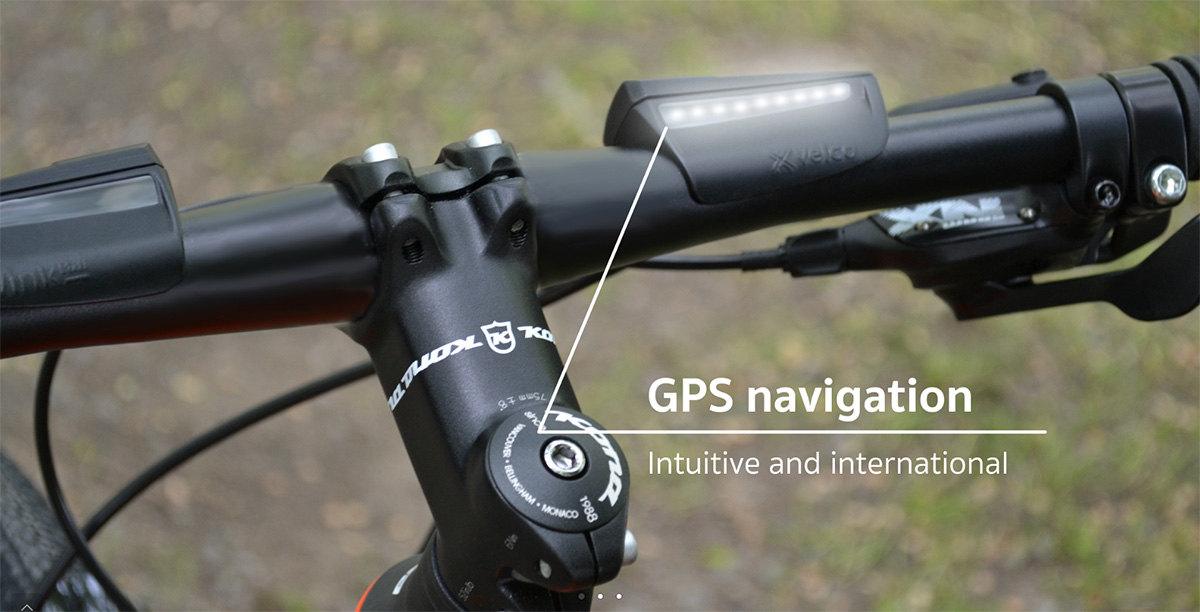
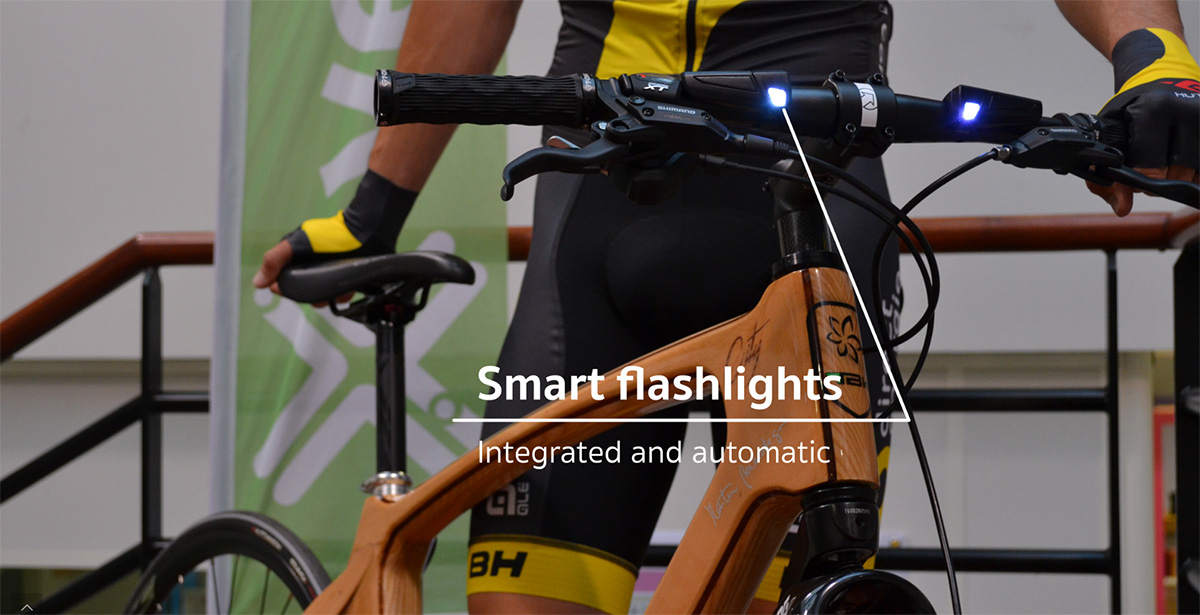
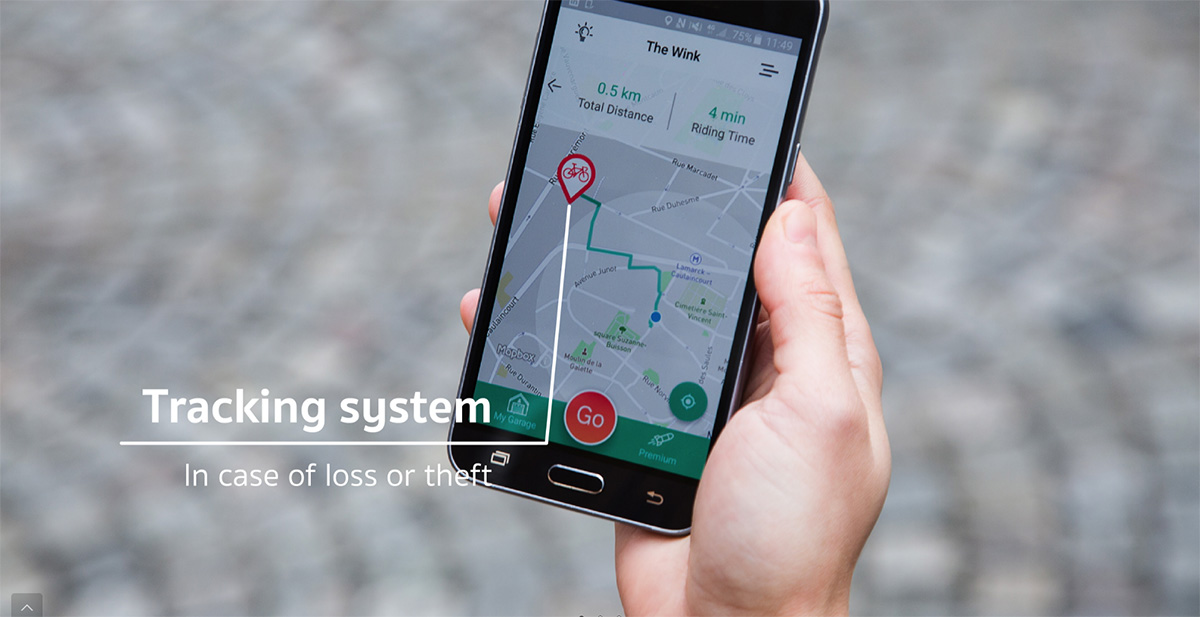
Also in the start-up hall were the strangely endearing MekaMon robots by Reach Robotics. The company have designed a smartphone controlled spider robot and built an immersive augmented reality platform by which players can battle virtual foes with their real robots. The robot being demonstrated was very responsive and had well engineered interchangeable parts (presumably for upgrades?). With the robots priced at £200 and essentially being the equivalent of a console for the game, the company seem poised to expand very rapidly as the opportunity for in game purchases and mechanical upgrades seems vast.
Needless to say I enjoyed my time at the show and will be returning to IFA in September 2018. This time I’ll be sure to take my own advice and give myself more than a day to all 26 halls.
Copyright © 2024 i4 Product Design Ltd. All rights reserved. | Privacy Policy